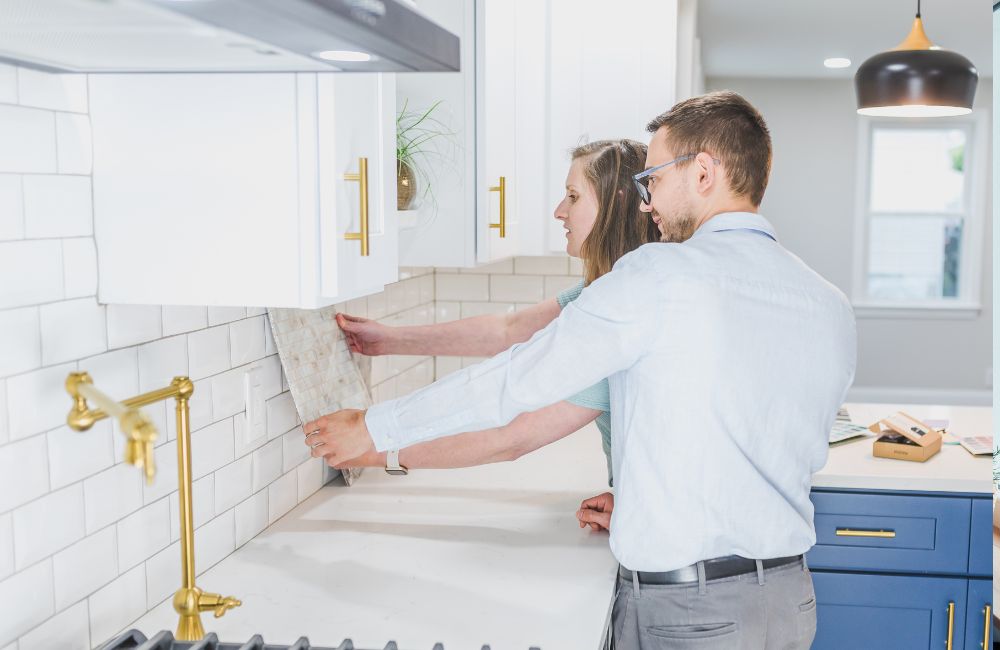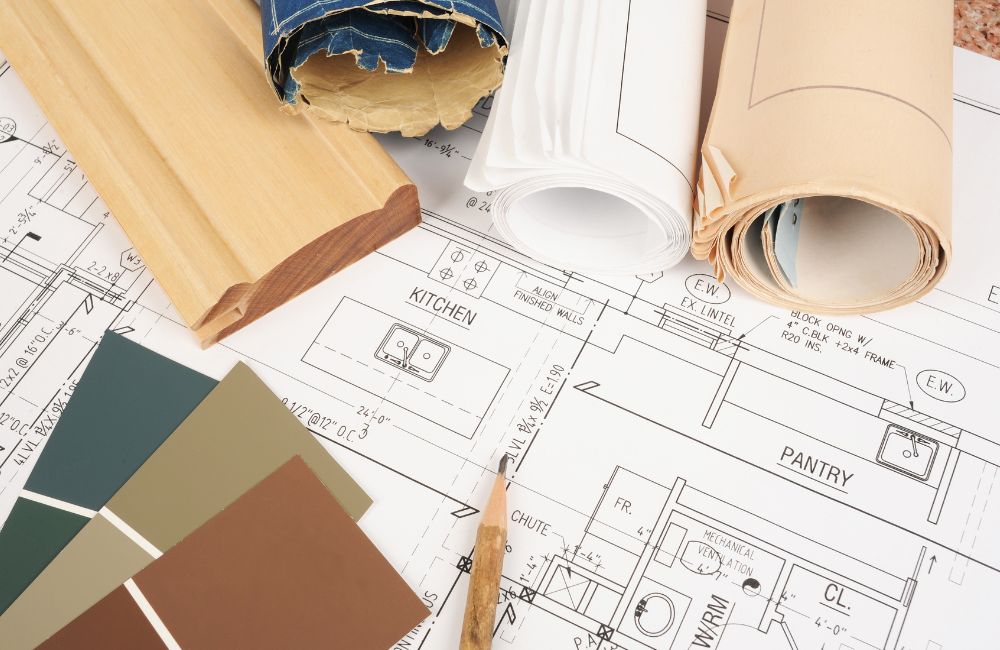Get the week's most popular posts delivered to your inbox.
Our weekly update is free yet priceless and you're less than a minute away from getting the current edition.
In the unlikely event we disappoint, you can unsubscribe with a single click!
Last Updated on October 30, 2025 by teamobn
Good tenants judge a kitchen fast. Small upgrades can lift rent and cut vacancy. A rental property kitchen renovation does not need a gut job. Plan for durability, speed, and easy cleaning. Choose materials that look great and survive turnover.
Contents
Key Takeaways
- Small, targeted kitchen upgrades in rentals can raise achievable rent and reduce vacancy without needing a full gut renovation.
- Durable, easy-to-clean surfaces and robust hardware cut maintenance costs and handle tenant turnover better over time.
- Planning for fast installs with readily available, standardized components keeps downtime low and gets units market-ready sooner.
Define Your Goals And Budget
Set clear outcomes before you spend a dollar. Define rent goals, downtime limits, and the finish level you want. Build a budget that supports those targets and protects cash flow. Decide what you will upgrade now and what waits. Then lock scope, schedule, and costs to prevent drift and overruns.
- Target rent and payback: set a realistic rent range using current comps and unit size. Aim for payback in 24–48 months based on market risk.
- Scope boundaries: list must-haves, nice-to-haves, and out-of-scope items. Freeze decisions after sign-off to stop change orders.
- Downtime limit: cap vacancy days. Work backward to a hard finish date and schedule crews accordingly.
- Budget structure: split into materials, labor, permits, appliances, and contingency. Hold 10–15% for surprises.
- Product tiers: decide where to spend and where to save. Invest in cabinets, counters, and flooring. Save on pulls, backsplash patterns, and a basic faucet if needed.
- Layout changes: avoid moving plumbing or walls unless ROI justifies it. Minor adjustments win speed and cost.
- Standardization: choose standard sizes and SKUs. Replacements become faster and cheaper during turnovers.
- Code and safety: plan for GFCI, dedicated circuits, and venting. Fix hazards before cosmetic upgrades.
- Contractor strategy: get at least three comparable bids. Require a written scope, milestones, and lien releases.
- Timeline and sequencing: demo, rough-in, inspections, close-up, finishes, punch. Build a simple Gantt with owner approvals at each gate.
- Make vs buy: DIY only if quality and speed match pro work. Hidden errors cost more later.
- Exit criteria: define “rent-ready” with photos, clean tests, and function checklists. No listing until all items pass.

Layout Decisions That Maximize Space
Square footage is fixed, yet flow is flexible. Smart layout tweaks make small kitchens feel bigger, safer, and faster to work in. Use standard dimensions and paths to cut bottlenecks.
Galley Updates That Feel Open
Keep the work aisle to 42–48 inches so two people can pass without shoulder bumps. Park the refrigerator at an end to prevent door conflicts. Run continuous counters on both walls to create long prep runs. Put the sink and dishwasher on the same side for easy dish handling. Limit uppers on one wall or use glass fronts to reduce visual bulk.
Add under-cabinet lights to brighten the planes where you actually work. Choose a slide-in range with a flush top to extend landing space. Use pull-out trash and a slim pantry to keep floors clear and traffic smooth.
L-Shaped And U-Shaped Pros And Cons
L-shaped layouts feel open and fit small or open-plan rooms. You get two strong legs of counter with flexible dining or prep zones nearby. Appliance spacing is easy and the corner can host deep drawers or a lazy Susan.
U-shaped layouts maximize counter but can crowd the aisle if legs pinch in. Plan 42 inches or more between opposite runs to avoid collisions. Use corner solutions that actually get used, like LeMans trays or full-extension drawers. Consider shifting one U leg into a short peninsula to add seating and keep the cook zone contained. Keep tall units to one leg so light still reaches the center.

Peninsula Vs Island For Traffic Flow
Pick a peninsula when floor area is tight or you need a hard boundary between cooking and circulation. It adds seating and storage without demanding extra aisles on four sides. Choose an island only when you can keep 36–48 inches clear on every edge. That space lets doors open and people move even with stools in use.
Place the sink or cooktop only if you can route ventilation and meet outlet and GFCI rules. Keep seating on the non-cook side to protect knees and avoid splatter. Use rounded corners to reduce hip hits in narrow rooms. Add task lighting above with dimmers so the surface works for prep and meals.
Material Choices That Survive Turnovers
Turnovers are hard on finishes. Choose materials that clean fast, resist moisture, and replace easily. Selections cut costs and downtime in a rental property kitchen renovation while keeping showings strong.
Cabinets Built For Dings And Moisture
Pick plywood boxes with sealed edges. Avoid raw particleboard near sinks. Use thermofoil or factory-painted doors with hard-wearing topcoats. Specify soft-close, full-overlay hinges rated for high cycles. Add PVC edge banding and adjustable legs to level fast. Order standard widths so doors and drawers swap in minutes. For a rental property kitchen renovation, durable cabinet boxes reduce lifetime cost.
Countertops That Balance Cost And Durability
Modern laminate with post-formed edges handles abuse and cleans fast. Compact laminate resists water at cutouts. Entry-level quartz at 2 cm with a build-up looks premium and shrugs off stains. Avoid porous stones that need routine sealing. Maintain standard depths and overhangs for easy replacement. Choose drop-in sinks if installers vary. During a rental property kitchen renovation, entry-level quartz often pays back in renewals.
Flooring That Handles Spills And Movers
Choose rigid-core LVP with a 20-mil wear layer. It locks tight, resists dents, and survives wet mops. Use waterproof transitions and stair nosings from the same line. Skip cheap foam underlays that squash and gap. Tile only in splash zones with stain-resistant grout. Keep a spare box for patches. In a rental property kitchen renovation, high-quality LVP ensures a fast and predictable turnover.

Paints And Backsplash For Easy Cleaning
Use scrubbable satin or semi-gloss on walls and eggshell on ceilings. Pick light neutrals that bounce light and hide scuffs. Go with simple 3×6 ceramic for fast layout and fewer cuts. Use premixed grout with stain protection. Run the tile only to practical heights to save cost. Keep a labeled touch-up kit on site for move-outs.
Hardware, Sinks, And Faucets Built To Last
Select bar pulls with common hole spacing for quick swaps. Choose stainless sinks with sound deadening and tight radii for easy wipe-down. Use a midrange, metal-bodied faucet with ceramic cartridges. Keep model numbers consistent across units. Stock spare aerators and supply lines. During a rental property kitchen renovation, standardized SKUs slash downtime when parts fail.
When To Use A Hands-Off Property Management Partner
Hands-off management pays when time is tight, distance is real, or risk feels high. Bring in a partner to stabilize cash flow, speed leasing, and reduce emergency calls during a rental property kitchen renovation.
Ideal Scenarios For Outsourcing Leasing And Maintenance
Use a partner if you live far from the property or travel often. Hire out when a job or family load makes daily coordination tough. Bring help in when a renovation must finish fast and you can’t risk schedule slips. Consider outsourcing if your target rent demands perfect photos, clean showings, and strict response times.
Hand it off if a resident will remain during the work and you need one point of contact. Choose support when vendor management, permits, and inspections feel like a second business. Go hands-off when a single mistake could wipe out months of gains.
How Guarantees And Service Levels Support ROI
Predictable payouts smooth the months when vacancy or late rent would sting. Service-level commitments keep response times tight and protect reviews. Centralized maintenance reduces repeat truck rolls and keeps records clean for future claims.
Standardized materials and SKUs speed repairs after move-outs. A provider like Belong can pair marketing, resident support, and predictable owner payments to reduce uncertainty and help you focus on the build.
What To Ask Before You Sign
Request the exact fee stack and any renewal or placement charges. Ask how payouts work during vacancy or late rent. Check average days-to-lease by ZIP code and property type. Verify vendor vetting, insurance, and lien release process.
Review maintenance controls, approval thresholds, and after-hours protocols. Confirm photo standards, listing syndication, and showing methods. Get sample owner statements and in-app reports so you know what you’ll see each month.
Conclusion
A successful rental property kitchen renovation starts with intent. Set clear rent goals, guard your downtime, and build a budget that can hold the line. Shape the space with smart layout choices that open traffic and extend prep runs. Then back it up with durable, standardized materials that clean fast and swap easily. Those moves raise perceived value without dragging out the timeline.
If time or distance threatens your schedule, bring in a hands-off management partner to coordinate vendors and keep communication tight. Keep a simple punch list and don’t list the unit until every item passes. Track vacancy days and leasing speed after the upgrade. Use those numbers to refine your next rental property kitchen renovation.Are you looking to create a small rental space within your property? Read our guide on prefab guest house with bathroom next!
FAQ: Rental Property Kitchen Renovation
- What budget should I set for a rental kitchen update?
- A light refresh with paint, hardware, lighting, and surfaces often falls in the $2,000–$8,000 range, depending on size and labor. A full replacement with stock cabinets, mid-tier counters, and new appliances can reach $12,000–$30,000, so match scope to your rent tier and target tenant.
- Which materials hold up best to tenant turnover?
- Go for LVP flooring with a thick wear layer, quartz or high-pressure laminate counters, and stock plywood-box cabinets with easily replaceable shaker doors. Choose bar pulls with common center-to-center sizes so you can swap hardware fast when pieces get damaged.
- What upgrades move the rent and cut maintenance calls fastest?
- Bright LED lighting, a quiet range hood, a deep stainless sink, and a pull-down faucet make the space feel new and durable. Add soft-close hardware and a pull-out trash base to reduce slamming, clutter, and wear.
- Do I need permits for a rental kitchen project?
- Cosmetic swaps like paint, cabinet doors, and similar fixtures usually don’t need permits, but new circuits, gas work, or moving plumbing typically do. Plan for GFCI protection near water, proper ventilation, and required smoke and CO alarms, and check local rules before you schedule trades.
- How do I minimize vacancy while renovating?
- Standardize sizes and SKUs across units, order in-stock materials early, and template counters before turnover so fabrication doesn’t stall your schedule. Stack trades tightly, preassemble what you can, and design the layout to accept off-the-shelf replacements in future turns.
Get the week's most popular posts delivered to your inbox.
Our weekly update is free yet priceless and you're less than a minute away from getting the current edition.
In the unlikely event we disappoint, you can unsubscribe with a single click!






